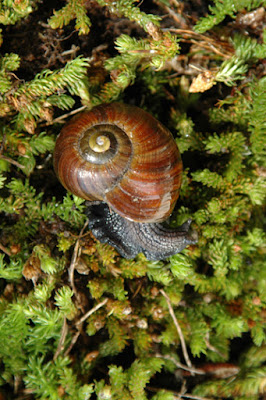Quite some time ago now (in April 2014), I published an article [“Paul Celan & Leicester Kyle: The Zone & the Plateau,” Ka Mate Ka Ora 13 (2014): 54-71] on New Zealand poet Leicester Kyle, attempting to link some of his attitudes towards place with similar ideas in the work of Paul Celan.
Some time later I received two emails which offered corrections to some of the information in the essay. I had (as I thought) arranged with the editor for portions of these to appear in the next issue of the journal, but given that has taken over two years to appear, I imagine these details must have got lost in translation.
In any case, it's perhaps better that I put them on record here instead. The above preamble is simply intended to explain why this process of correction has taken so long.
•
The first letter, from Dave Johnson, Leicester Kyle's brother-in-law, concerns the precise circumstances of Kyle's father’s suicide. The passage in my essay reads:
His father, a journalist with some literary ambitions (he worked with Allen Curnow on the Christchurch Press) came from a well-established Greymouth family, but found it difficult to adjust to life in the city. He committed suicide when Leicester was still in his teens. [60-61]Mr Johnson, in his email of 29th October 2014, makes these adjustments: “Cecil committed suicide (without meaning to) as he rang Helga [Leicester’s mother – JR] on the day of his death asking when she would be home. She was delayed by well over an hour and when she found him after he had swallowed his pills and binged it was too late to save him. Leicester was 29, not a teenager.”
He goes on to comment:
The snail Millertonii you mentioned is not the one from Mt. Augusta (now strip mined) I actually found the first specimen when we tramped up to the old Rainbow mine while botanising. Leicester thought the shell looked different and sent it off to Ch.Ch. It was eventually given the specific name Augusta.This refers to the passage in pp. 62-64 of my essay about the discovery of the rare “Millerton snail,” which I have unfortunately confused with another, even rarer snail discovered on Mt. Augusta.
The second letter, received 9 April 2015, from Kath Walker of the Department of Conservation, has provided a good deal more detail on the distinction between these two snails:
I just thought I’d get in touch to clarify some confusion in your essay around the snail Leicester found at Millerton township, which we initially thought a newly discovered subspecies of the species Powelliphanta lignaria (we dubbed it Powelliphanta lignaria “Millertoni”) and the famous one which was found higher up on the Plateau on the Mt Augustus ridgeline (now described as Powelliphanta augusta). Your essay has them as one and the same but they are actually 2 separate very different entities, & they suffered different fates.While I hope that it’s true, as Kath Walker is kind enough to say, that this confusion between the two snails and their respective fates does not affect “the theme of [my] essay,” I am nevertheless very anxious to correct any misinformation I’ve unwittingly perpetrated.
I don’t think Leicester ever saw the famous snail, Powelliphanta augusta, whose only habitat high up on Mt Augustus ended up being mined by Solid Energy, with the snails being held in DoC coolstores, tho I certainly had him searching for it for me back in late 2003/early 2004.
Coincidentally, just as I was trying to find the Mt Augustus snail, Leicester contacted me regarding the much bigger snail he’d seen in the Millerton township. We (Dept of Conservation) ran an intensive programme of rat control around the colony of the Millerton snail (P. l. “millertoni”) for several years to protect it while we investigated its origins using genetics. Not surprisingly, given its very limited distribution, very close to human settlement, this Millerton snail turned out not to be something different after all, but rather a population of P. l. lignaria (found north of the Mokihinui River mouth) looking a bit odd as it had been founded from only 1 or 2 individuals artificially transferred there, presumably by a resident in Millerton’s heyday.
None of this changes the theme of your essay – but it would be good to untangle the MAPPs reserve story – in the immediate vicinity of Millerton, which still exists, along with its annoyingly translocated population of P. l. lignaria (biogeographic patterns are important to retain in nature), and the P. augusta story with its much more sombre ending.
I’ve spent a decade trying to protect the Great Buller Sandstone Plateaux and its inhabitants via Environment Court appeals & always felt that Leicester’s poems cut to the chase & were worth far more than all the careful scientific evidence I prepared (“It’s the loss. Not protest notes to the CEO, or grumpy barricades …“). I agree with your thesis – the only chance of protecting a resource rich place is if many people love it for its own sake, and Leicester’s poetry could help that. In the end I wondered if his poetry spoke more to those who already loved and knew the landscape, both the geographical and the political landscape of the Plateaux.
Both Paul Celan and Leicester Kyle were poets who were exceptionally careful to get their facts straight, and I would be doing no service to their memory if I didn’t make every effort to alter these details in my essay.
Mea culpa, then: please bear these facts in mind if you ever feel tempted to revisit the original essay!



